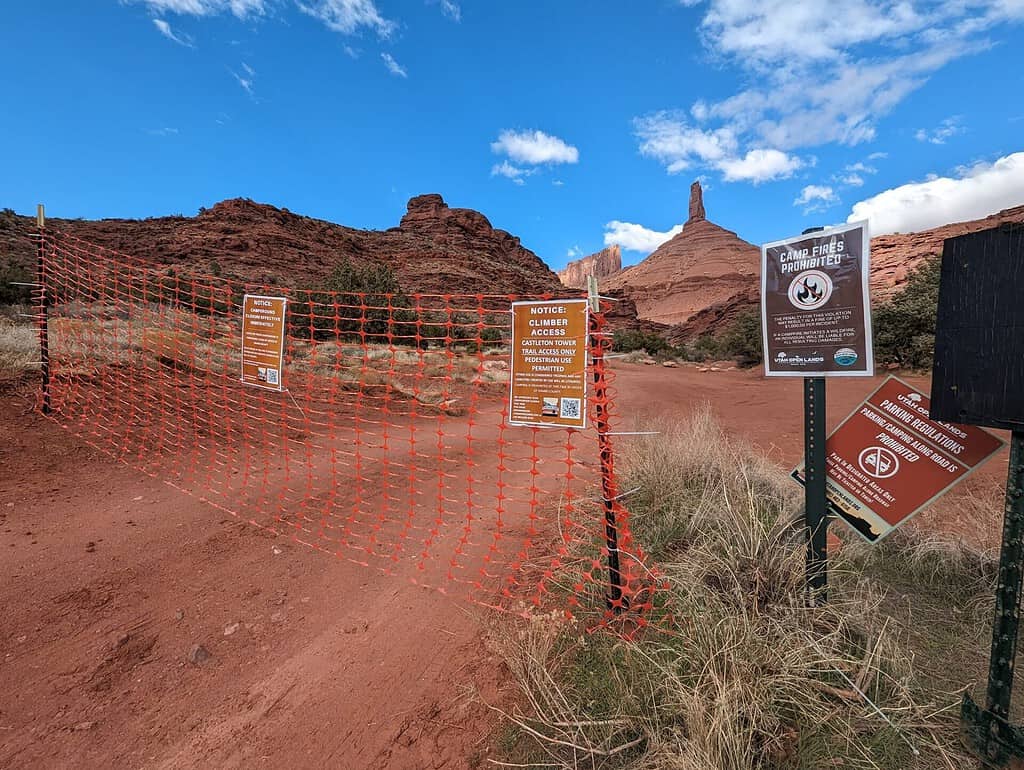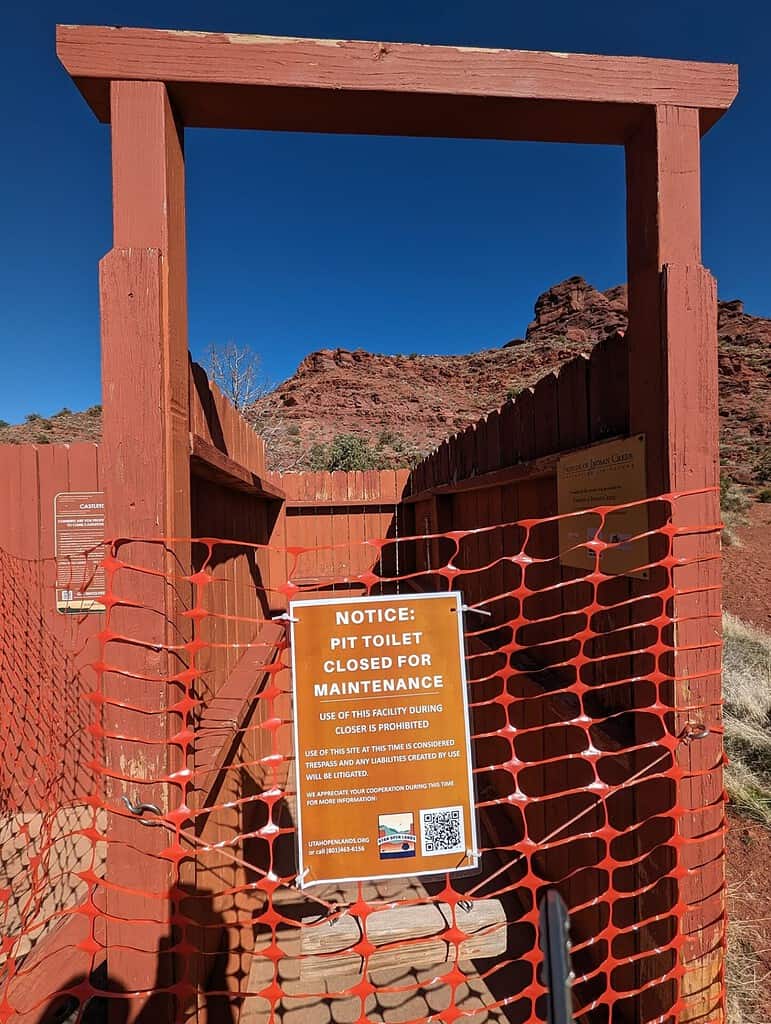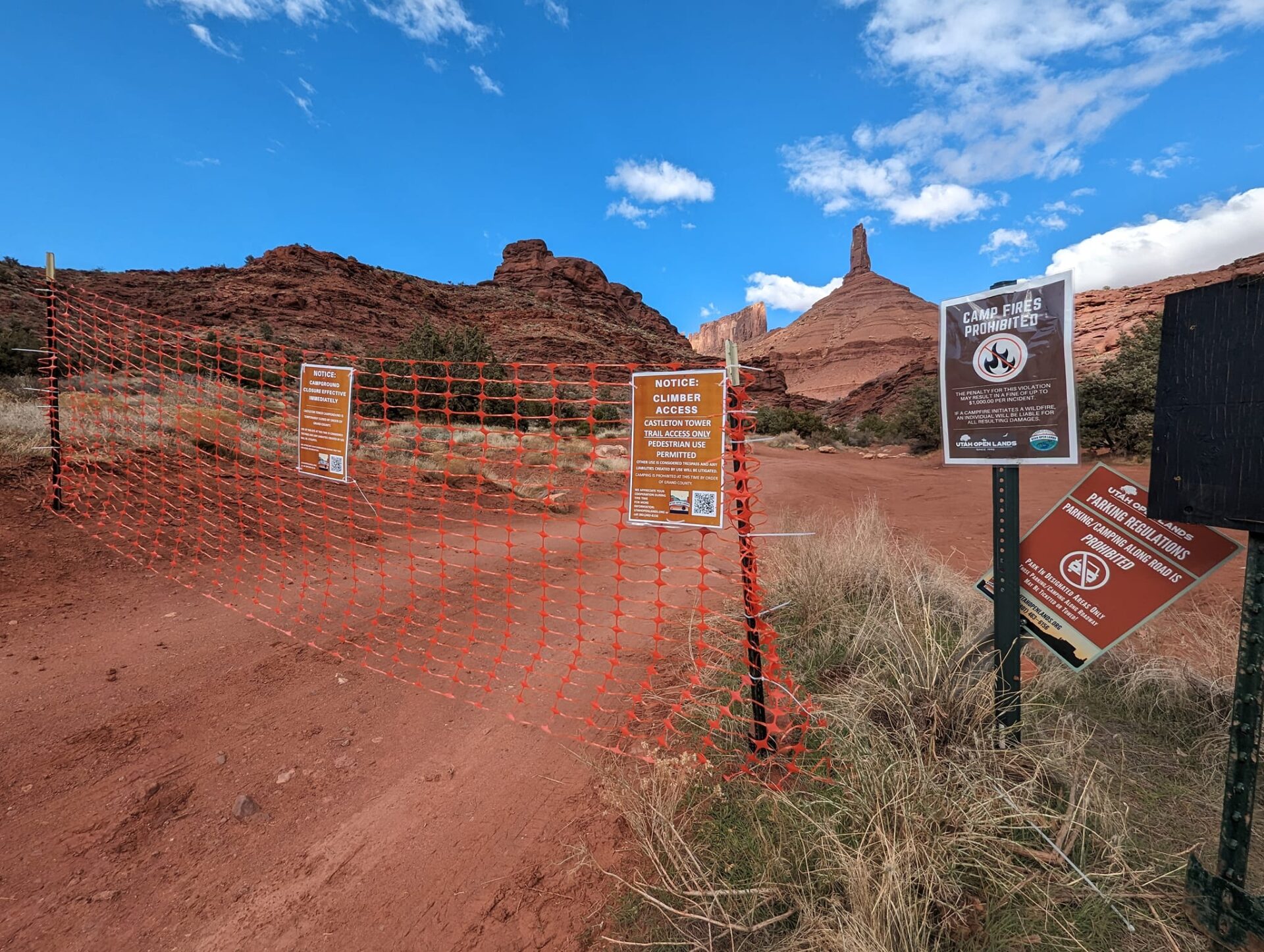Some information may be outdated.
Twenty miles past Moab along River Road is Castle Valley, an area known for its diverse access to outdoor recreation. In 2002, nonprofit Utah Open Lands purchased 221 acres of land for $640,000 under the base of Castleton Tower, an impressive 400-foot sandstone tower, from the School and Institutional Trust Lands Administration, now known as Utah Trust Lands Administration. This prevented the planned development of the land into a residential subdivision.
Since then, the organization has been dedicated to maintaining and preserving rock climbing access and a primitive camping area. They established the fee-free Castleton Valley Preserve and Campground, a historic camping area rock climbers use for access to Castleton Tower. A pit toilet was also installed in the area for proper human waste disposal.
However, in March 2024, climbers were surprised to find an orange fence and signage marking the closure of both the campground area and pit toilet.

Earlier that month, UOL had applied for a grading permit through Grand County to improve the access road, which caused a domino effect. UOL was informed that there was no record of the pit toilet permit in Grand County and that the land was outside the confines of the overnight accommodation overlay zone, an ordinance passed in 2020 that defines areas in which new overnight accommodation may be built.
Since it was not included in the overlay map, the land is governed by the Land Use Code, which states that camping on private property is illegal. This all led to the immediate closure of the pit toilet, as well as the Castleton Valley Preserve and Campground for overnight camping.

“It was definitely a little bit of a surprise to us,” said Wendy Fisher, executive director of UOL. “We’re now going through the process of making sure that it’s brought up through what the current county standards are.”
This includes retroactively working with the health department and county engineer to ensure there is no risk of flooding at the site of the pit toilet and to secure a permit for the facility.
Access to climbing and hiking to the tower is still open and it’s recommended to bring a wag bag to dispose of any waste appropriately as UOL grades the road and works to reopen the campground. Once the health department approves the pit toilet, day use of that facility can be restored.
“We felt it was critical to keep this [trail] access open so that other areas don’t get disturbed,” Fisher said, adding that this trail is the same one Huntley Ingalls and Layton Kor used to establish the first route on Castleton Tower in 1961.
Going forward, UOL is working with Grand County officials and planners to designate Castleton Valley Preserve and Campground as a historic “legal nonconforming” area. This would allow Grand County to approve the campground’s existence as long as it’s not expanded and no additional buildings are created.
That’s not an issue for UOL, as Fisher said they plan to keep the land as it has been for decades: a primitive day-use and camping area.
“We’re having good conversations and feel like we’re moving forward with everything that’s being required,” Fisher said, adding that she hopes everyone maintains patience and good stewardship of the land.
Grand County Planning Director Elissa Martin also felt optimistic about the reopening.
“Ultimately, once we get through our verification of the historic use, the campground should be able to open up again,” Martin said.
Appreciate the coverage? Help keep local news alive.
Chip in to support the Moab Sun News.





